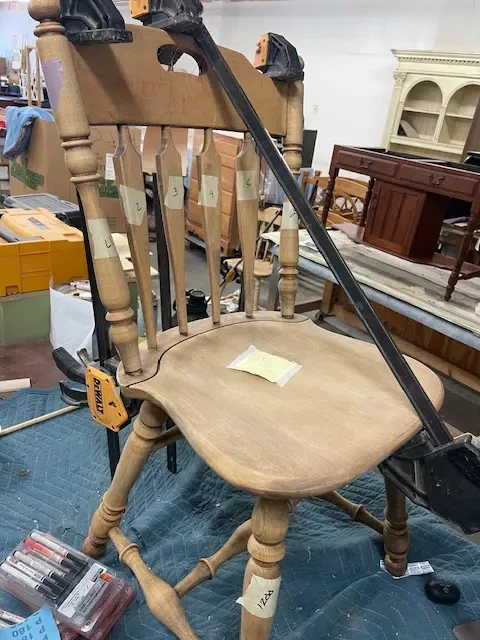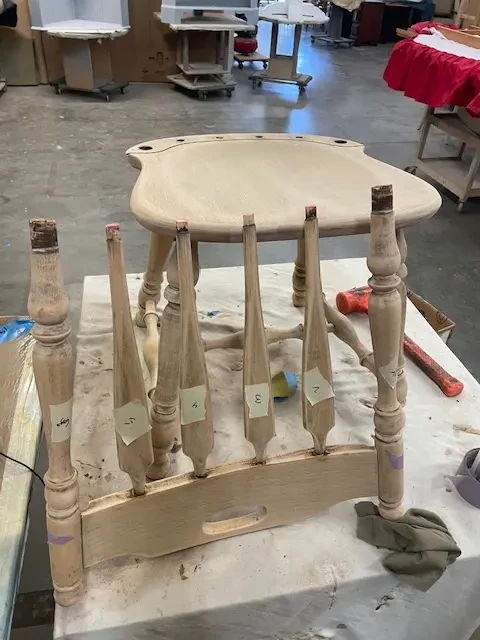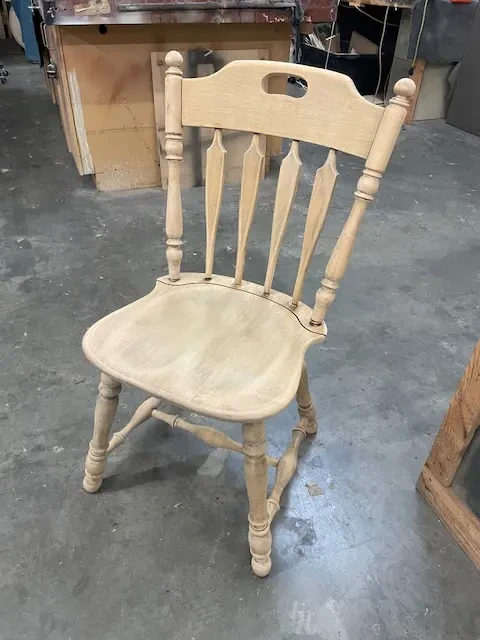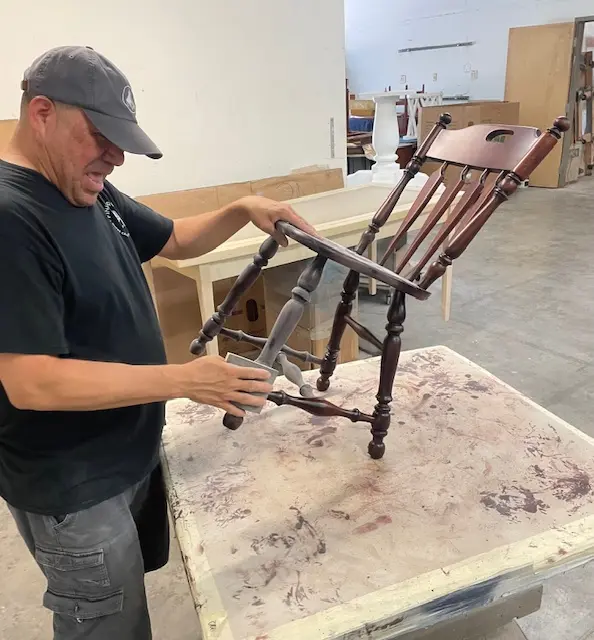A Brief History of the Kling Furniture Company
Today, original Kling furniture is sought after by collectors, antique lovers, and families who appreciate well-made, American-built craftsmanship. Finding a full set of Kling maple chairs in good structural condition — like the ones brought to Finish Pros — is increasingly rare.
Step 1: Careful Inspection
We explained to the family that with proper restoration — including refinishing and regluing — these chairs could easily last another 40–50 years. That longevity, combined with their history, made restoration the clear choice.
Step 2: Preserving Detail Through Hand Stripping
It’s especially important for antique or heirloom pieces, where preserving original craftsmanship is part of the value.
Step 3: Disassembly and Regluing
To repair the loose joints, each chair was carefully disassembled, with every piece labeled so it could be reassembled exactly as it was. Our repair process included:
- Cleaning each joint completely to remove old glue and debris
- Applying fresh wood glue to both sides of the joint
- Clamping the pieces on a perfectly flat surface to ensure the chairs would sit level when finished
- Wiping away glue drips with a damp cloth, and for any missed spots, carefully scraping with a razor before lightly sanding


This step restored the chairs’ stability, ensuring they were as strong as the day they left the Kling factory.
Step 4: Smoothing and Preparing the Surface

Step 5: A Custom Finish for Hardrock Maple
Our solution was to custom-mix a penetrating dye stain that would achieve the depth of color the client wanted. The stain was applied by hand and carefully wiped away to create an even finish.
- Two coats of sanding sealer using a state-of-the-art air-assist pump sprayer for a fine, even layer
- Fine sanding between coats for a flawless base
- Three coats of clear dull-rubbed sheen lacquer for lasting protection and a soft, classic luster

Why Restoration Was the Right Choice
- Heritage preserved — keeping a family treasure in daily use
- Durability — chairs that will last for decades with minimal maintenance
- Sustainability — avoiding the waste of sending solid wood to a landfill
- Value — high-quality refinishing costs less than buying new furniture of the same caliber
Pro Tips for DIY Chair Repair
- Label all parts before disassembly
- Thoroughly clean joints before gluing
- Clamp on a flat, level surface to prevent wobbling
- Wipe glue drips immediately to avoid extra cleanup
- Use a razor to remove dried glue, then sand lightly
- Preserve the wood’s original shape by sanding gently
- Consider dye stains for dense hardwoods like maple
Bringing Furniture Back to Life in Raleigh and Beyond
- Antique furniture restoration
- Wood furniture refinishing
- Custom upholstery and reupholstery services
- Furniture repair for both modern and vintage pieces



